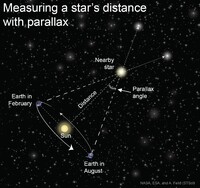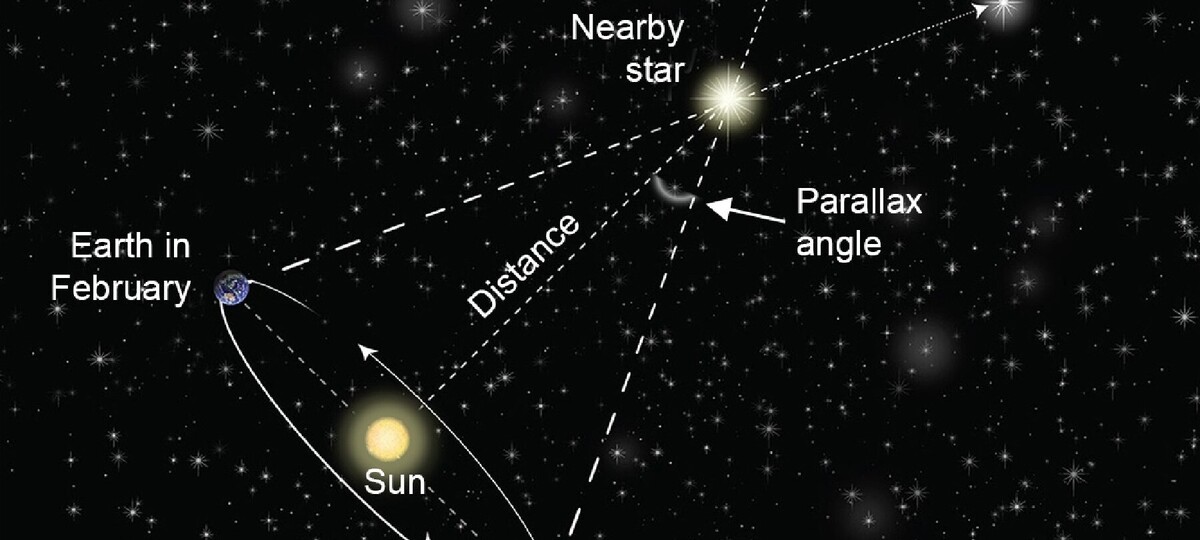Week of August 3 to 9, 2025
Let’s conduct a demonstration that we all found enjoyable during our elementary school years.
Shut one eye, extend your thumb at arm’s length, and position it in line with an object across the room. Keep your thumb steady, then slowly alternate blinking your eyes, and you’ll observe that your thumb appears to move in relation to the farther background.
Now move your thumb nearer to your eyes and attempt it once more. What kind of movement do you observe now?
The visible change in the position of your thumb relative to the background is referred to as “parallax.” Since your brain is aware of the distance between your eyes (the “baseline” of a triangle created by your eyes and any object), it can determine an object’s distance quite precisely.
Individuals who have binocular vision (two working eyes) apply this method continuously to move through their daily environment. It helps prevent you from stumbling over the cat or colliding with the vehicle in front of you.
But what about the stars? Could this same method be used to determine their distances? Naturally, the best approach to answering this is to give it a try, but I’ll save you some effort. You can blink your eyes at a star until you become dizzy; you won’t notice any change in its position. The truth is, the stars are simply too distant.
What if we had a baseline that extended beyond the distance between our eyes? For instance, what if we placed two telescopes on opposite ends of the Earth and then measured the position of a star? Would this result in any change?
Once more, the concise response is no, not even for the closest stars.
Okay, what if our reference line was even longer: for instance, the width of Earth’s orbit around the Sun? If we measured a star’s position in August, when Earth is on one side of the Sun, and then measured it again six months later when we’re on the opposite side, we would have a baseline of approximately 186 million miles.
Well, this question was initially raised by Greek philosophers over two thousand years ago, and, despite their efforts, no one ever observed a slight shift. No, the first time this was accomplished was in 1838, when Friedrich Wilhelm Bessel (1784-1846) utilized a telescope at the Königsberg Observatory in East Prussia to determine the position of the dim star 61 Cygni compared to the more distant stars in the background. Six months later — when Earth was on the opposite side of its orbit — he conducted the same measurement.
That he noticed any change at all is truly impressive, considering it was only two hundred-thousandths of a degree — roughly the size a pizza would look in San Diego if viewed from New York City!
Since the time of Bessel, advancements in technology have continued to progress, and we now possess parallax measurements (and thus, direct distance calculations) for over a billion stars!
The next time you demonstrate to your child or grandchild how to blink their eyes while looking at their thumb, keep in mind, it’s more than just a simple game. It’s one of the basic methods that scientists use to gauge the universe!

Stop by Dennis Mammana’s site at dennismammana.com. For articles written by other MathHotels.comSyndicate contributors and cartoonists, check out the MathHotels.comSyndicate website at MathHotels.com.
Follow MathHotels.com on MSN for more exclusive content
Related Headlines
- Enhancing Appetite and Addressing the Root Cause Aid in Feline Weight Gain
- Turn the Tables
- 2025 Volkswagen ID. Buzz
- Kiss and Make Up



